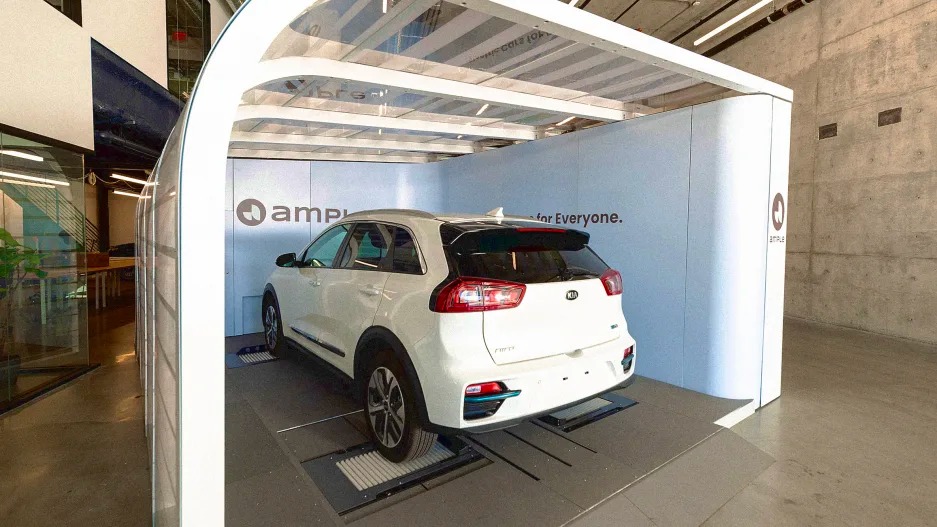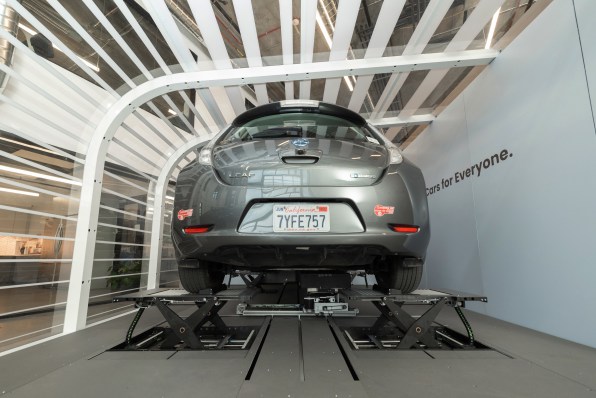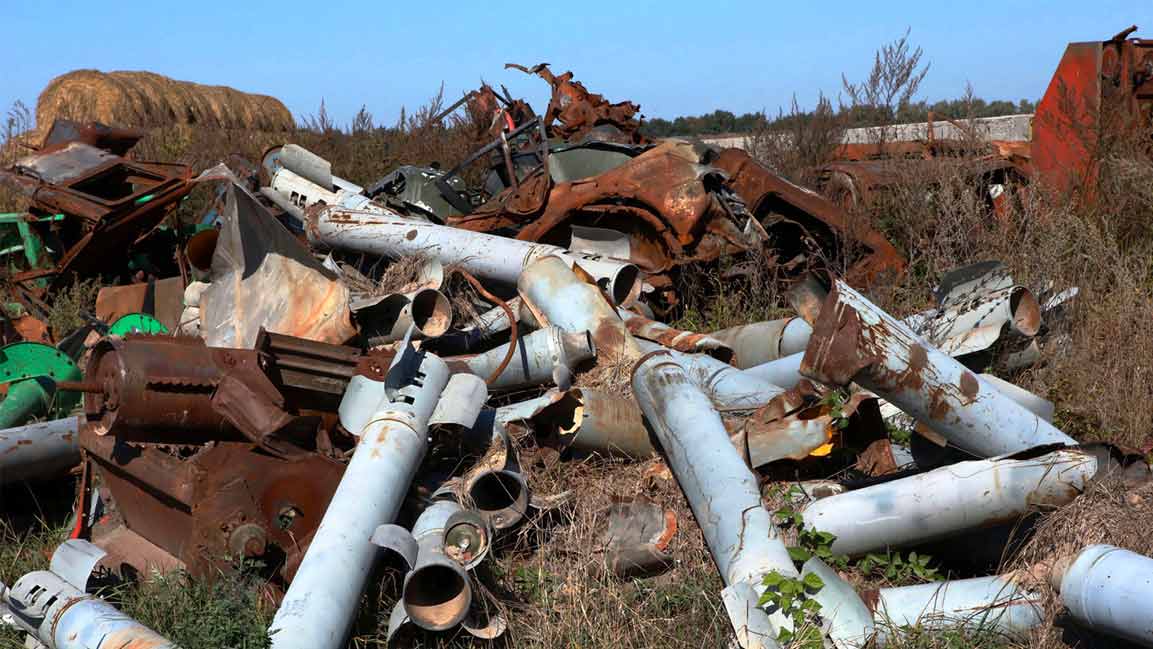- | 12:00 pm
This startup can give EVs a full charge in 10 minutes
Ample has stations around the Bay Area that do hundreds of battery swaps each day.

On a sunny Thursday morning in San Francisco, a driver pulled a Nissan Leaf into a building, parked on a platform, and stepped out of the car. Then the platform lifted the car in the air. Robotic arms carefully pulled out the electric car’s batteries and placed fresh, fully charged batteries inside. The whole process took around 10 minutes.
Ample, the startup that designed the station and runs a dozen more like it around the Bay Area, now does hundreds of battery swaps each day.

“People talk about ‘range anxiety,’” says John de Souza, Ample’s cofounder and president. “But if I were to give you a gas car that had a 200-mile range, you’d have no anxiety. That’s because when it runs out of gas, you just spend five minutes filling up with gas and drive away. The issue people have is charging anxiety.”
Slow chargers take hours to fully charge an electric vehicle’s battery; faster chargers might take only a half hour or less but are expensive to build. “The faster you charge, the more energy you lose as heat,” de Souza says. “The costs go up really fast. So if you wanted to charge a vehicle in five minutes, you might need a 1- to 2-megawatt charger, which is very expensive and very hard to make efficient.”
Many EV drivers plug in their cars at home to charge overnight. And as battery range continues to increase, charging may be less of an issue (for example, a 2023 Tesla Model S can drive more than 400 miles on a charge). Still, for urban apartment-dwellers who can’t plug in at home, or people who drive all day for work, battery swapping could make more sense.
In China, where there’s a high density of electric vehicles and most EV drivers live in apartments, battery-swapping companies are growing quickly. Nio, one startup with hundreds of battery-swapping stations in China, plans to build 1,000 more this year. A handful of startups are building thousands of locations of their own. (Other companies in Asia are focused on battery swapping for smaller vehicles, like mopeds and electric rickshaws; Gogoro, in Taiwan, does hundreds of thousands of battery swaps per day.)
The concept isn’t new. Early EV fleets experimented with battery swapping as long ago as the 1940s. Some more recent attempts failed: Better Place, an Israeli startup that launched in 2007, went out of business by 2013. Tesla opened a single swapping station in 2013 but quickly shut it down because it wasn’t widely used.
Ample is trying to address the main challenges it saw in past efforts, including the fact that other approaches required automakers to design their cars differently. “You can’t go through and ask [manufacturers] to change [their] vehicles,” de Souza says. “And you need to find a way to allow the same battery to work across different manufacturers.”

Ample’s design uses a modular battery that can fit into any car, in place of the battery that the manufacturer would normally use. “By breaking it into these modular components—you can think of them as the size of a couple of laptops, a little thicker—you’re able to rearrange them like Lego pieces to fit into different vehicles,” de Souza explains. (The smaller size is also easier for a robotic system to handle than a typical large, heavy EV battery.) The electronics are designed to work with systems that vary among cars as well.
Ample still has to work with car manufacturers, who then can sell versions of their cars with the new modular batteries, instead of their standard batteries, to fleet companies. In the Bay Area, it works with a fleet management company that leases cars to Uber drivers. Drivers use an app that directs them to the nearest battery-swapping station with software that attempts to minimize the time that a driver might wait in line, and makes sure that each battery is used as much as possible.
The cost of charging varies depending on the cost of electricity at that time of day, but the company aims for its service to match or cost less than the price of fuel for a gas car. De Souza says that the model can work with delivery fleets, rental cars, and other large fleets, and that his company plans to eventually work directly with individual consumers as well.
In the Bay Area, Ample currently has 12 swapping stations, and a $15 million grant from the California Energy Commission will help it expand in the state. It’s also beginning to work with large fleets to install networks of its stations in Europe.
The stations do not take long to install, and are set up in locations that are easy to access. “We spent a lot of time making sure that we could deploy them very quickly,” de Souza says. “There’s no construction involved in it, so we’re able to go find a couple of parking spaces that have access to electricity and deploy [a station] in a few days.”







































